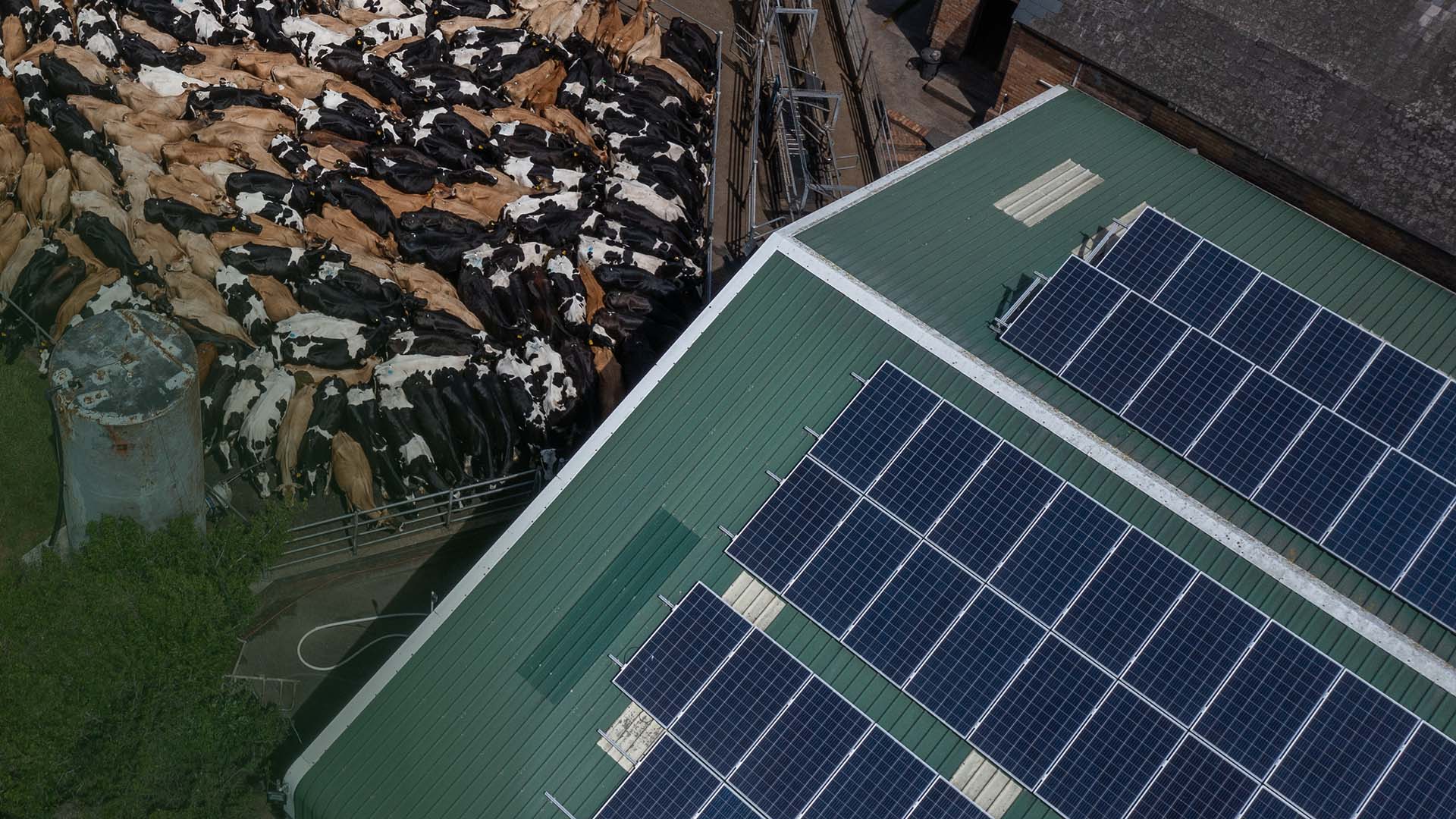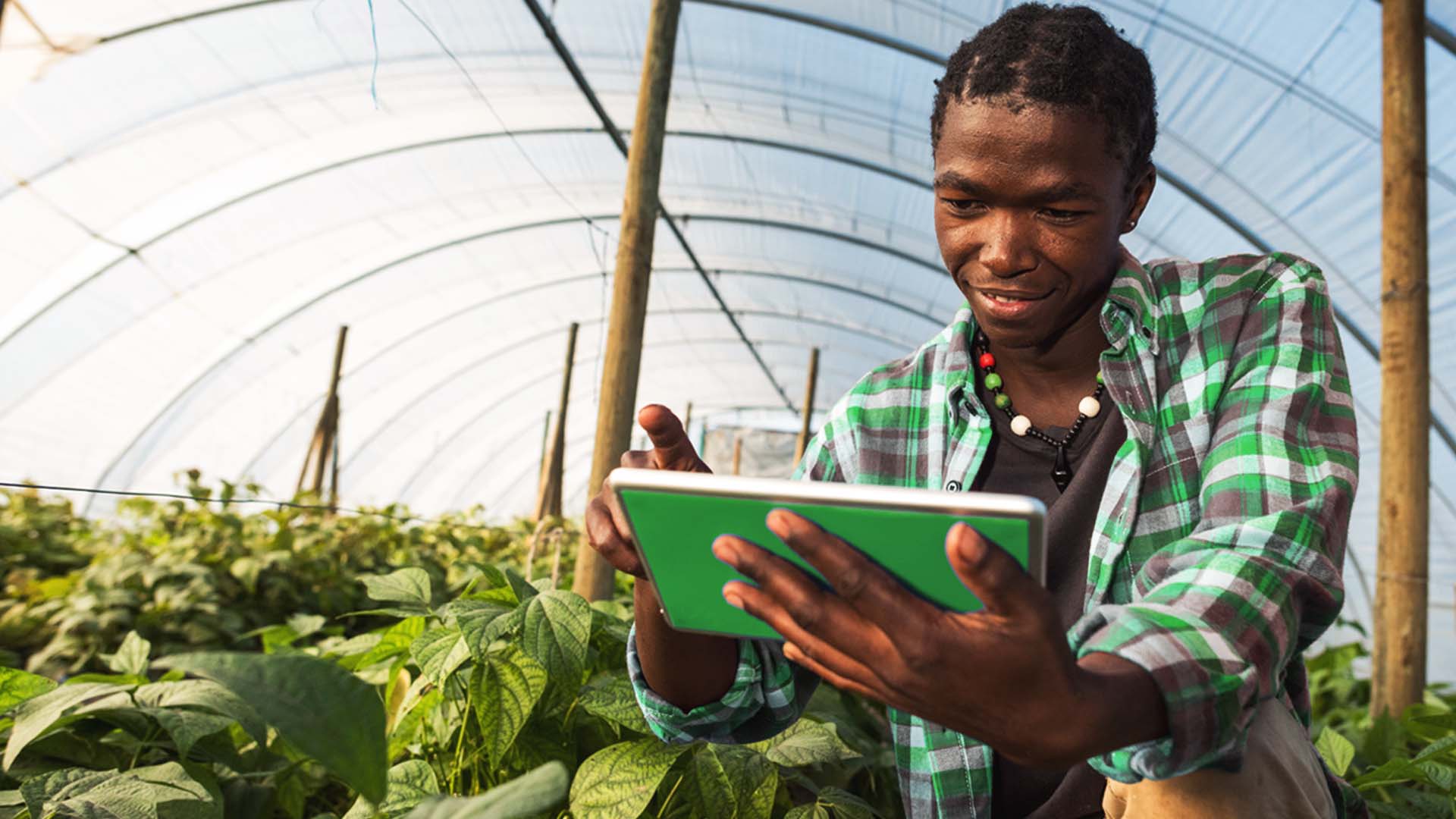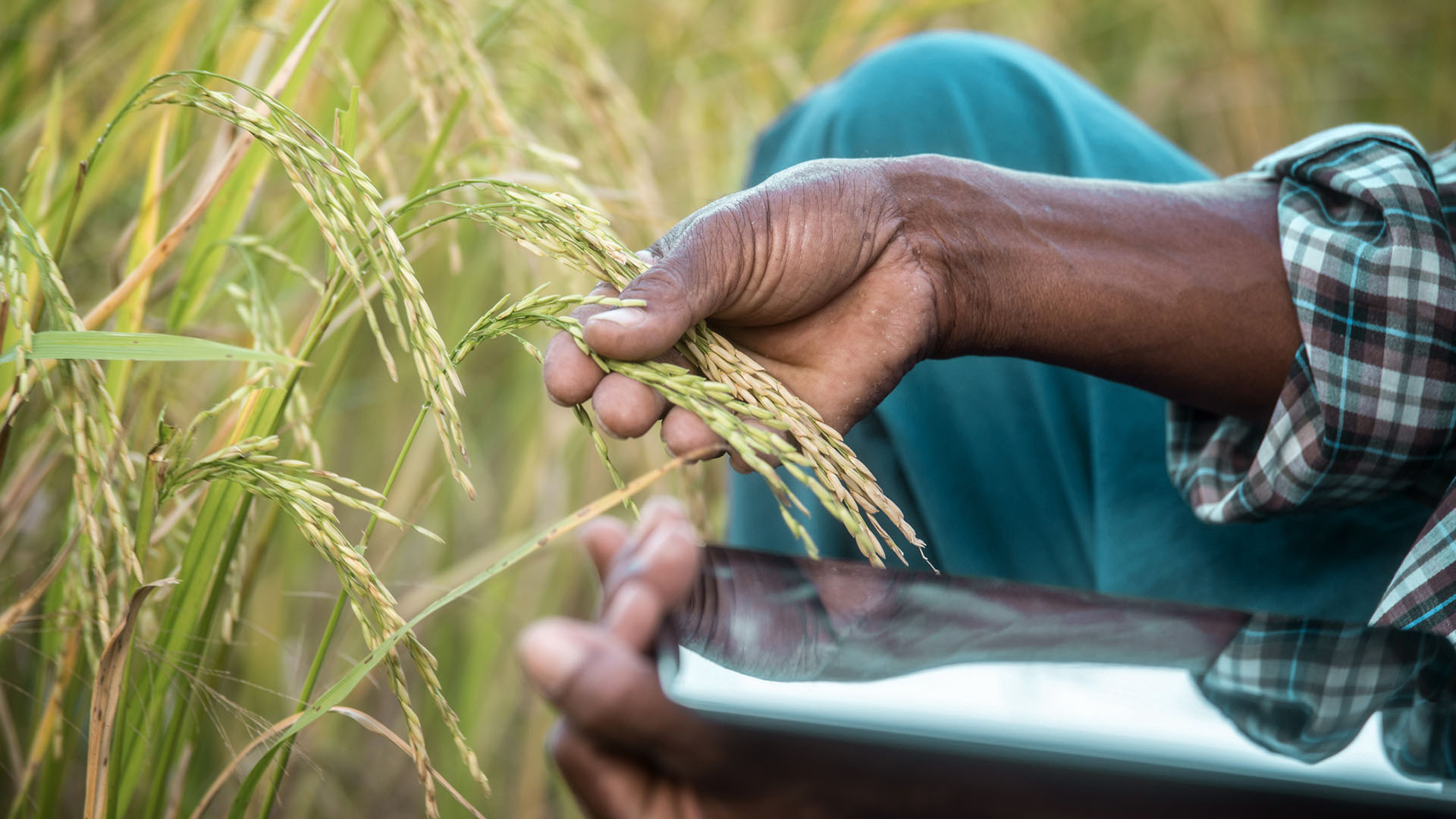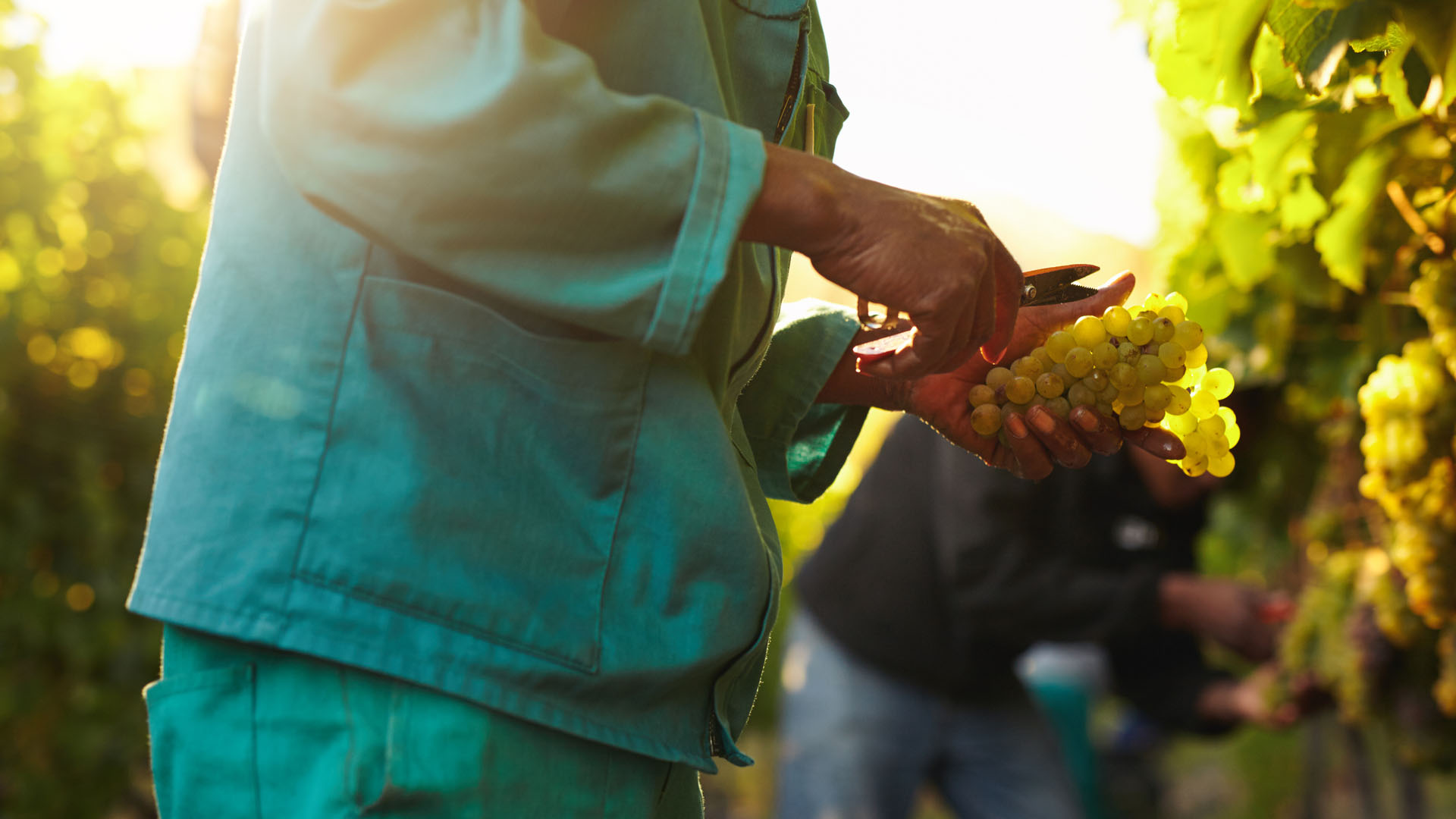Agriculture is the backbone of South Africa’s food security and an important export sector. It’s alarming, therefore, that global climate change is dealing the agricultural sector a double blow.
On the one hand, growing crops and raising livestock are becoming more difficult as extreme weather patterns become more frequent, leading to prolonged droughts, unpredictable rainfall, soil instability, biodiversity loss and ecosystem collapse. The scarcity of fresh water is also an issue – according to the World Bank, the world can expect ‘a 40% shortfall between forecast demand and available supply of water by 2030’, and the United Nations predicts that ‘by 2040, an estimated one in 4 children will live in areas with extreme water shortages.’
At the same time, agriculture is responsible for almost 20% of the greenhouse gas (GHG) emissions driving climate change, most notably carbon dioxide and methane. Add the processing and distribution of agricultural products and in total, food production accounts for 31% of GHG produced. Agriculture needs to reduce emissions, conserve water, protect the soil and preserve the ecosystem, while at the same time battling the challenges of climate disruption – and still produce enough food for us all.
It’s time to examine how your agribusiness contributes to environmental damage and adopt more sustainable farming practices. Ultimately, agricultural operations that adopt greener methods, raising livestock or crops in ways that conserve the ecosystem, are likely to be better prepared for the harmful effects of climate change.
Different green solutions suit small, medium and large agribusinesses
The changes you can make depend on the scale and type of your farming operation. There is no one-size-fits-all solution that suits every farmer – you will need to assess your own agribusiness, preferably with the help of a qualified business or financial advisor.
Precision agriculture is a more environmentally friendly way to improve yields
With their guidance, you can decide where to adopt greener practices according to your farm size, the crops or livestock you farm, the labour you need to run it, the availability and affordability of that labour, your access to asset or development financing, and all the other unique circumstances of your agribusiness.
Sustainable agricultural practices
Sustainable agriculture means adopting farming practices that take nature’s ecological cycles into account and are sensitive to the environment at large – from micro-organisms all the way up to the soil, air and water that sustain the whole ecosystem.
This kind of farming is sustainable environmentally, economically and socially. The goal is to meet present needs without harming the ability of future generations to meet their own needs. Sustainable agriculture prioritises the long-term health of both natural and human resources over short-term economic gain.
Here are the few sustainable farming practices you could consider...
Precision agriculture
Technologies like satellite imagery, GPS mapping and data collection by drone now enable farmers to manage even large areas with precise interventions only where they’re needed. You can monitor factors like soil quality, water requirements, and levels of fertiliser, pesticides and herbicides at a micro scale on a computer map that divides the land into much smaller units. You can optimise production while reducing costs by making the required adjustments to each unit with pinpoint accuracy.
You can also use climate data and predicted shifts in the weather for long-term planning in case changes in rainfall patterns make it wise to consider switching to different crops or livestock. Precision agriculture is driven by data − there are no assumptions. It allows you to work the soil better, not harder. It’s a more environmentally friendly way to improve yields while minimising wasted expenses.
Mixed farming and mixed cropping
Mixed cropping, also called intercropping or polyculture, is the practice of growing more than one crop simultaneously in the same field because the plants interact with the soil and each other in complementary ways. Grown together, they produce more reliable yields than they would when grown alone in monocropping.
The classic example is the indigenous North American trio of maize, beans and squash. Because the plants grow at different heights, they don’t compete for sunlight, but they do reduce opportunities for weeds. Each crop’s root system grows in different patterns while removing and adding different nutrients from and to the soil, maintaining nutritional balance and reducing soil compaction.
Mixed farming is like mixed cropping, but you add livestock. Chickens, for example, can be excellent at pesticide-free pest control, provided you let them forage only among crops that chickens won’t eat. Apart from eating insect pests, their manure adds natural fertiliser to the soil. Both mixed cropping and mixed farming can reduce the amount of synthetic pesticide and fertiliser needed.
Crop rotation and cover crops
Crop rotation is an ancient but still highly effective way of maintaining soil health and relying less on fertilisers. By planting a specific list of crops in successive seasons and maintaining that cycle, you create multiple benefits for the soil – like replacing nitrogen and other depleted nutrients, avoiding compacted soil by varying the root systems, controlling pest species and enriching the soil with organic matter.
Nedbank has the expertise to help you embrace more sustainable business practices
Cover crops are crops you plant but don’t harvest – they cover the fields in the off-season to help the soil retain water and reduce soil erosion by wind or rain. If you grow flowering cover crops, you help sustain bees and other pollinators too, and cover crops also help reduce weeds. When you’re ready to plant the next cash crop, the cover crop can be ploughed back into the soil to form compost, which also supports biodiversity.
Precise irrigation techniques
Irrigating crops using furrows or sprinkler systems is not the most sustainable use of water. Modern drip-irrigation techniques can reduce water consumption by 20% to 40% while increasing yields by 20% to 50%. Along with smart irrigation, planting cultivars that require less water is another way to make your agribusiness more sustainable.
Using renewable, alternative, energy sources
The ongoing Eskom load-shedding affects agribusinesses as seriously as it affects every other business and millions of households, and there’s no indication the regular electricity outages will end in the foreseeable future. Installing an alternative sustainable power source is arguably now essential to the sustainability of any business, and agribusinesses are no exception.
Investigate your options in solar, wind and hydro energy – whether you just want to keep your farming operations running during load-shedding, or you want to build a bigger system than you need so you can sell excess electricity back to the grid in the future, or you want to go off-grid and become completely energy independent.
Solar photovoltaic systems are currently the most affordable option, and even then, installing a system can be costly, especially if you need a lot of batteries to store power. However, your savings on your electricity bill offset the costs of financing a solar installation to some extent, and the ability to maintain production when load-shedding hits the grid is another huge saving. Most importantly, the energy is greener – over time, the multiple benefits of being able to generate your own electricity more than pay for the cost of the system.
How Nedbank can help your agribusiness
Nedbank has the expertise to help you embrace more sustainable business practices, with a team of highly qualified advisors who can offer you innovative structured financing options. For more information, email us at agriculture@nedbank.co.za or download our brochure.








